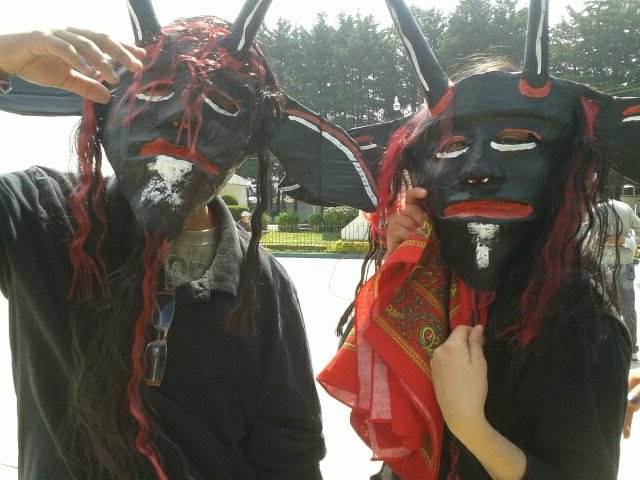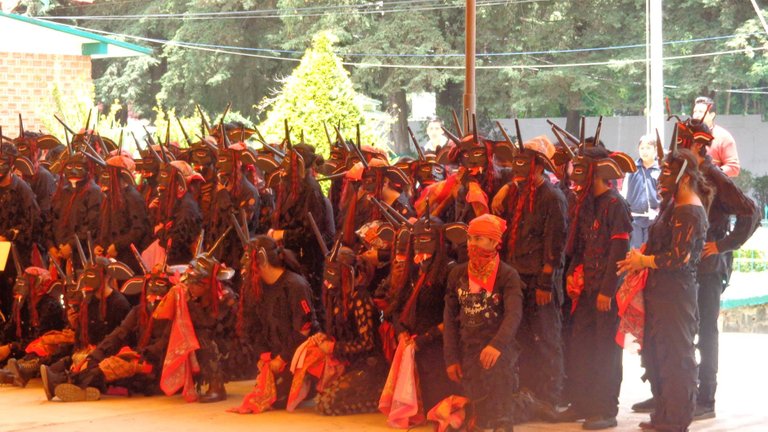Hace algunos meses, tuve la oportunidad de participar en un proyecto que consiste en promover y recuperar la cultura atraves de la danza. En esta ocasión, nos toco interpretar la danza de los diablos. Este baile proviene de la época Colonial, cuando los hacendados españoles utilizaban la mano de obra de los esclavos negros, y así sustituir a nuestros aborígenes que no soportaban las jornadas laborales a que eran sometidos.
I had the opportunity to participate in a project that involves promoting and restoring culture through dance. On this occasion, we played the dance of the devils. This dance comes from the Colonial period, when the Spanish hacendados used the labor of the black slaves, and thus to replace our aborigines that did not support the working days to which they were submitted.

En esta danza, bailamos tanto hombres como mujeres, y también hay un Diablo Mayor y su mujer llamada ¨La Minga¨ que es la madre de los diablos. Ella baila con El diablo mayor y es provocativa y coqueta. Nuestra vestimenta consistía en unas prendas maltratadas, viejas y rotas de color negro. Se usan paliacates rojos en cada mano y uno en la cabeza.
In this dance, we dance both men and women, and there is also a Greater Devil and his wife called "La Minga" who is the mother of the devils. She dances with The Big Devil and is provocative and flirtatious. Our clothing consisted of battered, old and broken black garments. Red bandages are used in each hand and one on the head.

Es muy grato poder interpretar este tipo de baile, ya que también es muy alegre y entretenido para el publico. Y lo mas importante, que es dar a conocer este tipo de tradiciones.
It is very pleasing to be able to interpret this type of dance, since it is also very cheerful and entertaining for the public. And more importantly, that is to make known this type of traditions.

Buenas tardes @hilanit
Curiosa tradición.
Así es pero es una danza muy alegre y divertida, Ya que también sacamos a bailar a gente del público. ¡Saludos!